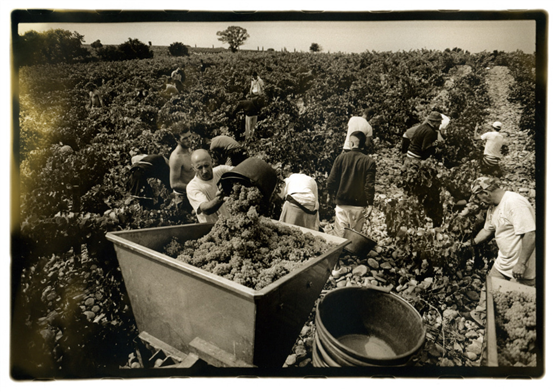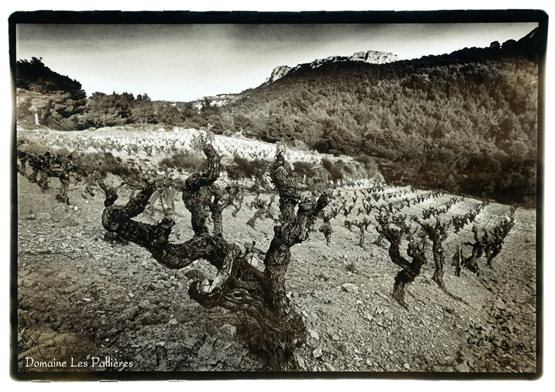

Domaine Vieux Télégraphe was founded over 100 years ago in 1898 by the current producer’s great grandfather, Hippolyte Brunier. Hippolyte was a farmer who originally planted less than a hectare of vines to produce wines for personal use on the La Crau Plateau, one of the highest points between Chateauneuf-du-Pape and Bédarrides. A telegraph relay tower was assembled here in 1821, due to the altitude. Little did they know that the decision to do so would coincide with the naming of one of the wine world’s most famous and revered Domaines.
As a result of the enjoyment his wine was bringing, Hippolyte decided to grow his vineyard to sixteen hectares, bottling more wine and getting his sons involved to help. When Henri, Hippolyte’s grandson, joined the business he bought with him the construction of a new winery with temperature control to help prolong and protect during fermentation. He also replanted the vineyards. All of this came together when he launched the first bottlings of Domaine Vieux Télégraphe.
Many a vigneron would look at the vineyards of Domaine Vieux Télégraphe in the early stages and think that it is too much of a tough and unruly place to plant, which it certainly is on first viewing. However, when you delve deeper you find that it is an elite and prosperous location. The soil has a top layer of ‘galets roulés’ which are rounded stones, left behind by the Alpine glaciers which melted long before the birth of the Rhône Valley. The vines are exposed to the elements including frost, hail and heavy rain but also the unforgiving Mistral, which can be a help as well as be a hinderance as it aids against rot and other diseases. There is also exposure to powerful sunshine, although it has its positives. Too much sun of course would be detrimental but the galets roulés help protect the roots by reflecting the sunlight and discharging the heat back up to the grapes, creating a micro-climate perfect for the ripening process.
The galets also provide model drainage for the roots. Beneath lies a layer of red clay known as ‘molasse’ which also contributes to the insulation from extreme temperatures. Further study of the soil shows layers of alluvial deposit, limestone and silica, proving it to be a soil vastly rich in minerals and nutrients. In 1986 the Brunier family purchased the classic Chateauneuf-du-Pape estate, Domaine la Roquète and after investing in vineyards and a winery it was transformed into a mature, 30-hectare, modern winery. Other vineyards were also purchased for production under the Brunier label, but none come close to the prestigious fruit produced by Domaine Vieux Télégraphe. An impeccable blend of balance, structure and complexity from the oldest vines of the Domaine, both the red and white are some of the most sought after of the appellation due to their outstanding quality and longevity as well as the expression of the terroir within these bottles. The “les Pigeoulet” and “Mégaphone” are wines the Brunier family added to their range as affordable cuvées that still showcase the diverse and renowned terroir.
hese wines are meant to be enjoyed young in comparison to the Vieux Telegraphe and Telegramme, due to the more fresh and fruitier profile. With a focus on sustainable grape growing, cultivation is undertaken with a stern conviction, whether working on the La Crau Plateau, La Roquète or Les Pallières. The simple belief is fine fruit makes a fine vintage. To achieve this the utmost care is taken into the care of the vines and their fruit. Down to the ‘easier’ tasks like traditional ploughing or fertilizing of the soil in the winter months or even the removal of unripe grapes and excess foliage in the spring/summer season, a great deal of consideration goes into every task.


Our suppliers come from all around the world, but they share one common goal – quality.